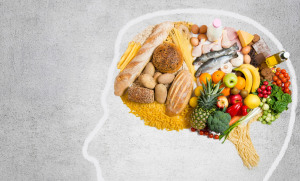Kissel + Wolf takes a look at the potential opportunities for growth in fibre-based packaging across many market sectors, fuelled by the material's recyclability and printability, enabling high quality graphics and strong consumer engagement.
The recyclability of plastic packaging is improving, however, it is still very confusing for consumers to understand which plastic to put into which bin, and how to best recycle it. Brands are looking to alternatives, such as sustainable fibre-based packaging solutions.
Food packaging
Consumers are becoming more conscious about the environment and are making climate friendly choices when buying products, and expectbrands to do their part by offering packaging that is fully recyclable. Fibre-based packaging offers a better alternative to plastic packaging when it comes to recycling.
The way we consume and package food is shifting, with fibre-based packaging coming to the fore. This is one of the global megatrends shaping packaging around the world.
We can see some of these trends appearing in our local market. For example, apples sold in smaller quantities previously wrapped in plastic bags are now being offered in a paperboard tray with a beautiful, printed fibre-based sleeve, grabbing the attention of buyers.
Another great example is a fibre-based ice cream carton, moving away from the plastic tub. As the product needs to contain a thin inner layer of polyethylene (PE) to ensure product protection, it typically contains 95 per cent cartonboard.
Sushi Shusi recently moved away from its boring looking plastic take-away box to a more sustainable paperboard box with wonderfully printed Japanese artwork, delighting its customers.
Pizza has always been delivered in corrugated boxes. However, there is still opportunity to fully utilise the pizza box as a marketing tool. Little is done to use the space on the pizza box to promote other products or services. For now, a missed opportunity.
Paper bags
With many big retailers no longer offering free plastic bags, and the need to reduce single use plastic, paper bags are on the rise. They are a far better and sustainable solution when it comes to recycling.
Higher quality white or coloured paper bags have already been used for many years by luxury and fashion brands; now the rustic brown paper bag is in high demand and allows grocery shops and food delivery services to send engaging messages to their customers.
Shipping boxes
Consumers are looking for convenience and experience while shopping online and the rise of eCommerce has significantly increased the number of shipped packages.
Plastic packaging is lightweight and cheap to ship, but it does not offer the same unboxing experience a paperboard box would present. The 'unboxing' experience is very limited and, in many cases, can give the consumer a feeling of receiving a cheaper product.
While there are plastic compostable solutions available, but not all of them are fully compostable as they suggest. In addition, plastic packaging is not capable of shipping bulky orders and products which need additional protection.
The paper-based shipping box is a different proposition. The product is protected, and bulky items can be sent with ease. More importantly, and if it's designed well, the unboxing experience for the consumer can add so much more value to the product. In a competitive market, where brands struggle to creat cut-through, the moment of truth and the first experience when receiving the product is more important than ever.
Consumer engagement
When considering the unboxing experience, the shipping box is the perfect platform to engage with consumers.
By printing QR codes onto the packaging for example, consumers can scan the QR code to learn more about the brand, get detailed product or warranty information, receive discount codes, or sign up for special promotions. Furthermore, the empty ‘real estate’ space can be utilised to upsell or cross sell other products.
Combined with short run digitally printed packaging, brands can engage in different ways every couple of weeks.
The opportunity
The fibre-based packaging industry has a golden opportunity as demand for sustainable packaging solutions is increasing and by nature, paperboard is renewable and recyclable.
The untapped empty space on boxes can be used to better engage with consumers. Rather than selling on price, converters can sell the value add of a smart design and engaging packaging.
With more and more production done locally, packaging converters need to consider offering fibre-based packaging solutions to their customers.
This sponsored content was supplied by Kissel + Wolf, supplier of a wide range of digital, screen and offset printing products to the Australian and New Zealand markets. The company's selection of digital, graphic and textile printing products means versatility over a diverse range of printable materials such as textiles, wood, paper, glass, metal, plastics and much more.






